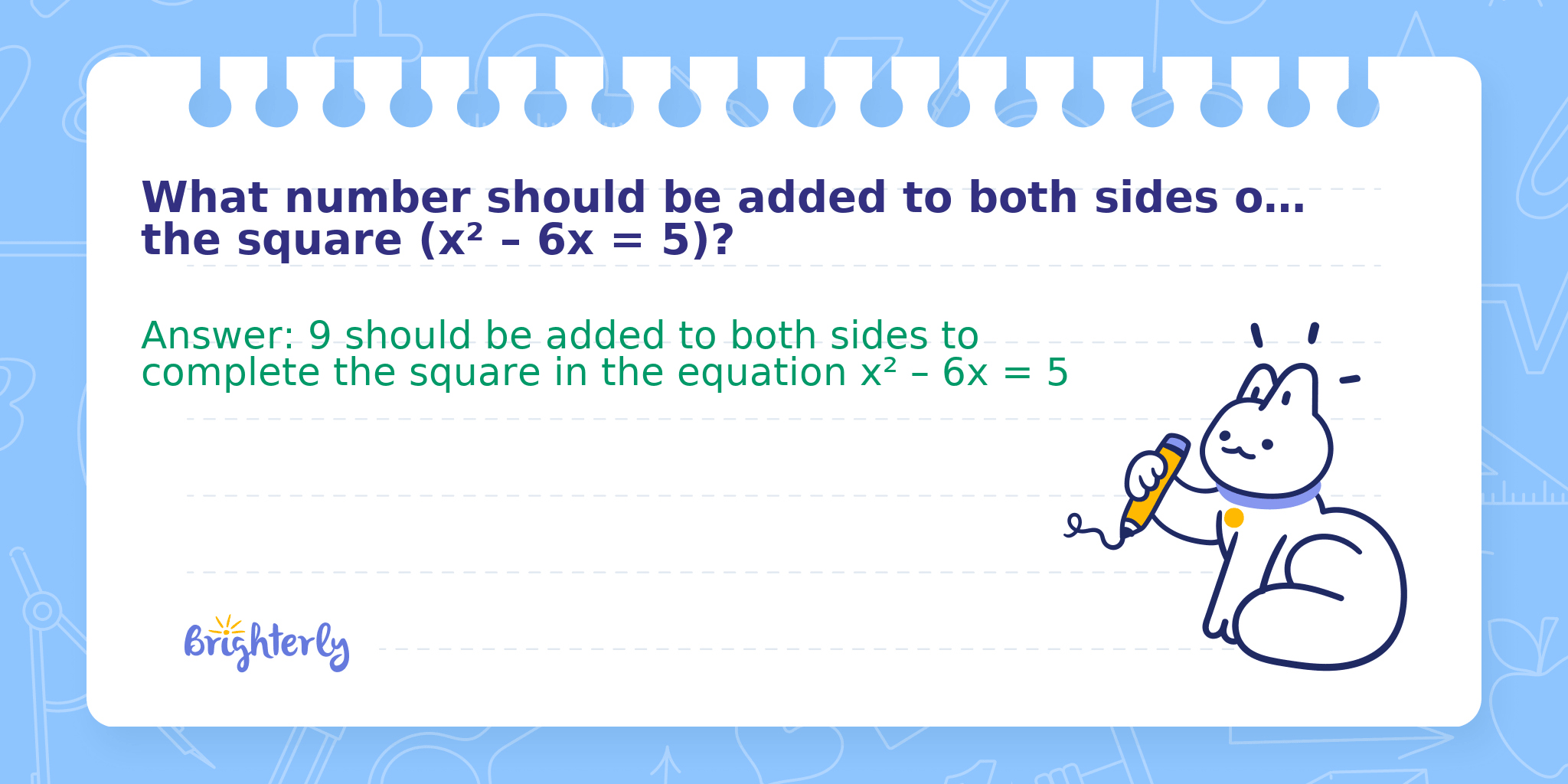
Reviewed by Maila Caliao
What number should be added to both sides of the equation to complete the square (x² – 6x = 5)?
Answer: 9 should be added to both sides to complete the square in the equation x² – 6x = 5
field_6Completing the square is a technique used to solve quadratic equations and write them in the form (x – h)² = k. To do this, you add a specific value to both sides of the equation so that the quadratic expression on one side becomes a perfect square trinomial. This method is especially useful for solving equations that aren't easily factorizable.7483edd98156
Methods
The number added to both sides to complete the square is based on half the coefficient of x squared.
Step 1: Identify the coefficient of x, which is -6
Step 2: Take half of -6 (that is -3), then square it: (-3)² = 9
Math Tutor Explanation Using the Process Approach
Follow the step-by-step process of completing the square on the quadratic equation.
Step 1: Write the equation x² – 6x = 5 and focus on the x² – 6x part
Step 2: Add (−6/2)² = 9 to both sides, making the left side a perfect square trinomial
Step 1:
Step 2:
Math Tutor suggests: Practice Completing the Square and Quadratic Transformations
Build your skills in solving quadratic equations and rewriting them using completing the square and vertex form techniques with these related exercises.
FAQ on Completing the Square
Why do we complete the square?
Completing the square helps solve quadratic equations and rewrite them in a form that makes properties like the vertex clear.
What is the general formula for the number to add?
The number added is (coefficient of x divided by 2) squared: (b/2)².
Can completing the square be used for every quadratic?
Yes, any quadratic equation can be completed the square, though some may have more complex coefficients.
What happens after you complete the square?
You can solve for x by taking square roots on both sides of the equation.
Is this method related to the quadratic formula?
Yes, the quadratic formula is actually derived from the process of completing the square.


